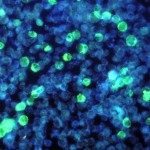Link to Pubmed [PMID] – 22768283
PLoS ONE 2012;7(6):e40351
Although interleukin (IL)-7 is mostly known as a key regulator of lymphocyte homeostasis, we recently demonstrated that it also contributes to body weight regulation through a hypothalamic control. Previous studies have shown that IL-7 is produced by the human obese white adipose tissue (WAT) yet its potential role on WAT development and function in obesity remains unknown. Here, we first show that transgenic mice overexpressing IL-7 have reduced adipose tissue mass associated with glucose and insulin resistance. Moreover, in the high-fat diet (HFD)-induced obesity model, a single administration of IL-7 to C57BL/6 mice is sufficient to prevent HFD-induced WAT mass increase and glucose intolerance. This metabolic protective effect is accompanied by a significant decreased inflammation in WAT. In lymphocyte-deficient HFD-fed SCID mice, IL-7 injection still protects from WAT mass gain. However, IL-7-triggered resistance against WAT inflammation and glucose intolerance is lost in SCID mice. These results suggest that IL-7 regulates adipose tissue mass through a lymphocyte-independent mechanism while its protective role on glucose homeostasis would be relayed by immune cells that participate to WAT inflammation. Our observations establish a key role for IL-7 in the complex mechanisms by which immune mediators modulate metabolic functions.
